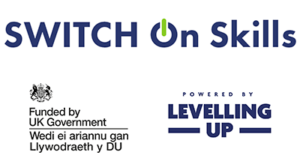Materials Shaping the Future of Sustainable Energy Production
In pursuing a sustainable and cleaner future, the role of materials in energy production cannot be overstated. The renewable energy landscape is evolving rapidly, and innovative materials are at the forefront of these transformative changes. Let’s explore the key materials driving advancements in various sustainable energy sectors with real-life examples.
Solar Power: One of the cornerstones of renewable energy, solar power relies on efficient photovoltaic cells. While silicon has been a stalwart, researchers actively explore materials like perovskite for their superior light-absorbing properties. For instance, SPECIFIC, a Swansea University-based Information and Knowledge Centre, has made significant strides with printed carbon perovskite solar cells, creating the world’s first fully roll-to-roll printed perovskite solar cells. SPECIFIC researchers established a new low-cost and scalable carbon ink formulation to replace gold used in the cell electrode, typically applied after printing using an expensive and slow evaporation process. This means for the first time, perovskite photovoltaics can be genuinely fully roll-to-roll printable.
Wind Energy: The wind energy sector, marked by towering turbines, harnesses composite materials’ power. Blades made from fibreglass or carbon fibre-reinforced polymers provide the strength and flexibility required for optimal energy conversion. Companies like Siemens Gamesa, a global leader in wind energy, employ advanced composite materials in their turbine blades to enhance performance and reliability, contributing to the efficiency of wind power generation.
Moreover, advancements in permanent magnets, including neodymium and dysprosium, increase turbine efficiency. Vestas, a major wind turbine manufacturer, incorporates neodymium-based magnets in their turbines to maximise power generation and improve the overall efficiency of wind farms.
Hydroelectric Power: In the realm of hydroelectric power, traditional materials like concrete and steel remain crucial. These materials, continually advancing in terms of durability and efficiency, form the backbone of dam construction and hydropower facilities. The Three Gorges Dam in China is a prime example, utilising vast amounts of concrete and steel to create the world’s largest hydroelectric power station, providing clean energy to millions of people.
Biomass and Bioenergy: Biomass energy, derived from organic materials, relies on the innovative use of cellulosic materials. Wood, agricultural residues, and dedicated energy crops are becoming increasingly important in the bioenergy landscape. For instance, Pacific BioEnergy, a Canadian company, focuses on the sustainable production of wood pellets from biomass for use in energy generation, providing an eco-friendly alternative to traditional fossil fuels.
Energy Storage: Energy storage is a linchpin in the transition to renewable energy, and materials in this domain are continually evolving. Tesla, a pioneer in energy storage solutions, utilizes advanced lithium-ion battery technology in their Powerwall and Powerpack systems. These batteries play a crucial role in storing excess energy generated from renewable sources, ensuring a stable and reliable power supply.
In conclusion, real-life examples underscore the pivotal role of materials in driving sustainable energy production. From record-breaking solar efficiencies to advanced wind turbine technologies and innovative hydroelectric projects, the ongoing evolution of materials is propelling us toward a cleaner and more sustainable energy future.
As we navigate these fascinating developments in renewable energy, our ‘Materials for Energy‘ training course offers an in-depth exploration into the materials revolutionising our sustainable future, equipping you with the knowledge and skills to be at the forefront of this vital transformation.

Find out more about SWITCH On Skills here: https://www.now-switch.wales/netzeroskills/switch-on-skills/


